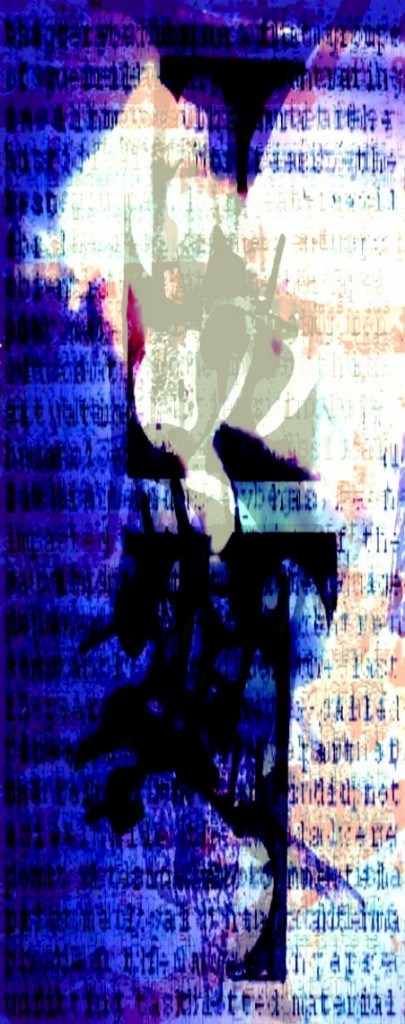Asemic-Pansemic [M.G.] +plus+ Why we continue using the term asemic writing, even though there is no such thing [J.L.]
Leftwich/Giovenale, collab piece, 2007
(see http://vispostock.blogspot.it/2007/08/with-jim-leftiwch.html)
Asemic-Pansemic
Jim leftwich is definitely right in saying there's no actually perfect 'asemic' thing or sign, since everything conveys some meaning, everything may find its way to ––at least–– an inner 'emotional' (scribble of) meaning.
He speaks of "pansemia" (from the Greek prefix "pan-" = all), and in doing so he just suggests that everything emits/expresses (or is an echo of) some semantically rich sign, always provided with almost a shadow of meaning; so everything makes sense, and a bunch of meaningful directions may always be attached to the invisible arrows uprising from any of the written traces we imagine and conceive and make or find.
That said, it seems to me that a 'proper' (?) asemic area can be seen in the zone of the mind opaquely linking our expectations for a known written linguistic message and content to an actually unknown shape of glyph.
A whole text or drawing appears in front of us as an asemic 'thing', indecipherable to the intellect that does not recognize the language; but at the same time it may be meaningful (and, yes, beautiful) to the ...taste, perception... soliciting some sort of empathy.
I not only think of the written walls of our cities, nor the practice of asemic writing in itself alone. I'd also like to refer to the mere visible... lines among things. The borders and boundaries of blocks and knots of streets as seen from a satellite eye. Or to the written code of rain in a pool of wet cement. Or to casual traces of animals (and men) in caves. Etc.
As soon as we ––in looking at them–– think to superimpose the shapes of some possible written language, we abruptly discover anything may actually be code, message, and at the same time it isn't. We dwell in uncertainty. It defies any attempt we try to put in practice in order to understand, decipher. But, in doing so, it makes some other opaque meaning arise. Kind of cloud of possibilities. A haze of “make sense” hovering everywhere and around the specific written layer we're facing.
Marco Giovenale
* * *
Why we continue using the term asemic writing, even though there is no such thing:
i think all human experience has semantic content.
that's why i think asemic writing is a kind of aspirational writing.
we aspire to create an asemic writing, a writing without semantic content.
and we fail.
so we try again, and fail again.
if we genuinely care about the practice, we repeat this process over and over, for a long time.
eventually, we lose all hope of achieving our goal.
we lose faith in the goal.
we no longer believe in our ability to create an asemic writing.
so we decide upon an alternative goal.
we decide the process has never been about the product, the object, the poem. it has always been only about the process.
it has always been about the process of training the mind, perhaps of quieting the mind (to borrow a phrase from John Cage).
it is a writing against itself, and more than that, a writing against the self.
that is how it can be compared to a spiritual discipline, like zazen or hesychasm, or zerufe otiot.
that is why standards of aesthetic quality are worse than irrelevant to the process.
and, that is also why a hierarchy of practitioners is worse than irrelevant in this context.
Jim Leftwich









